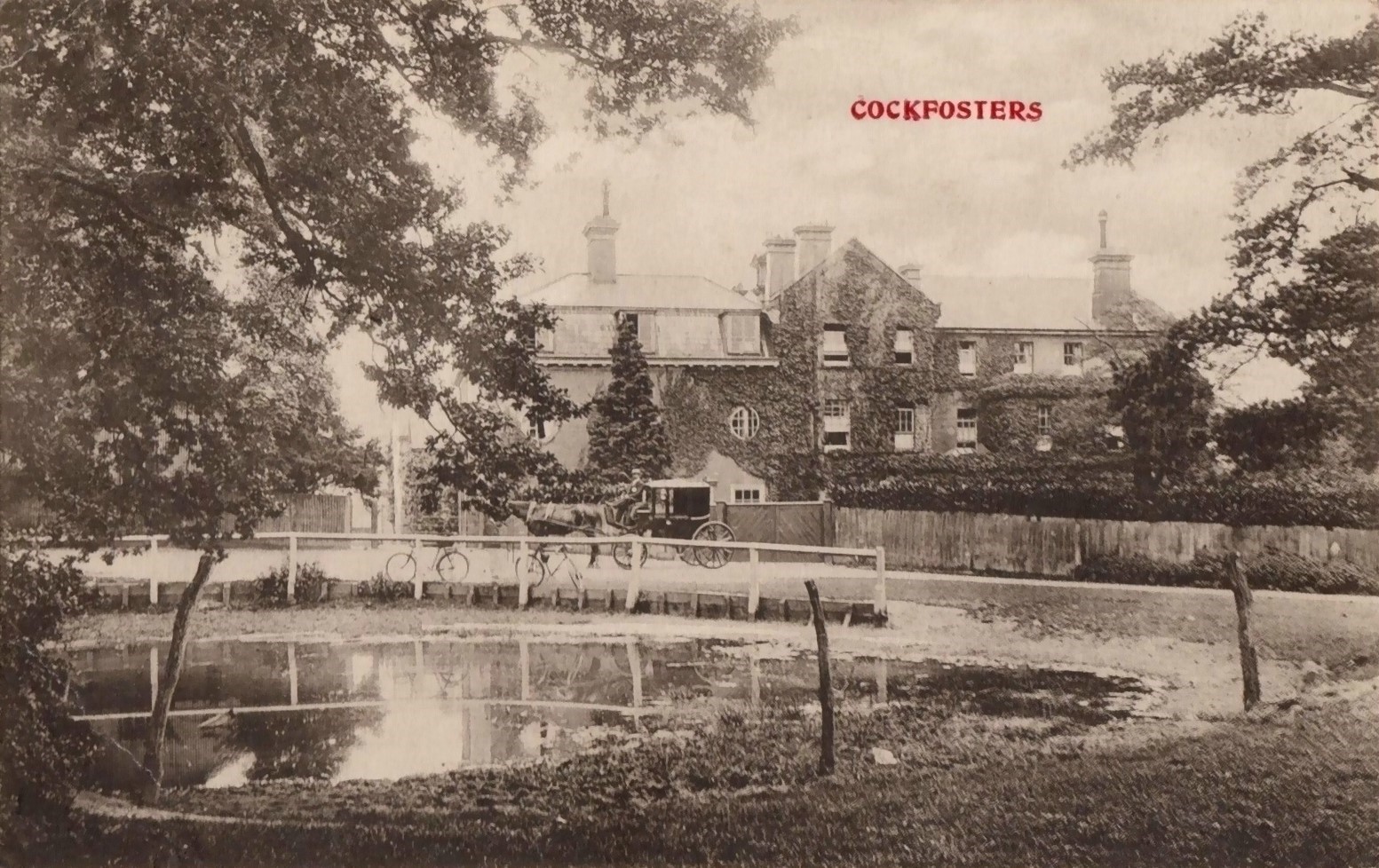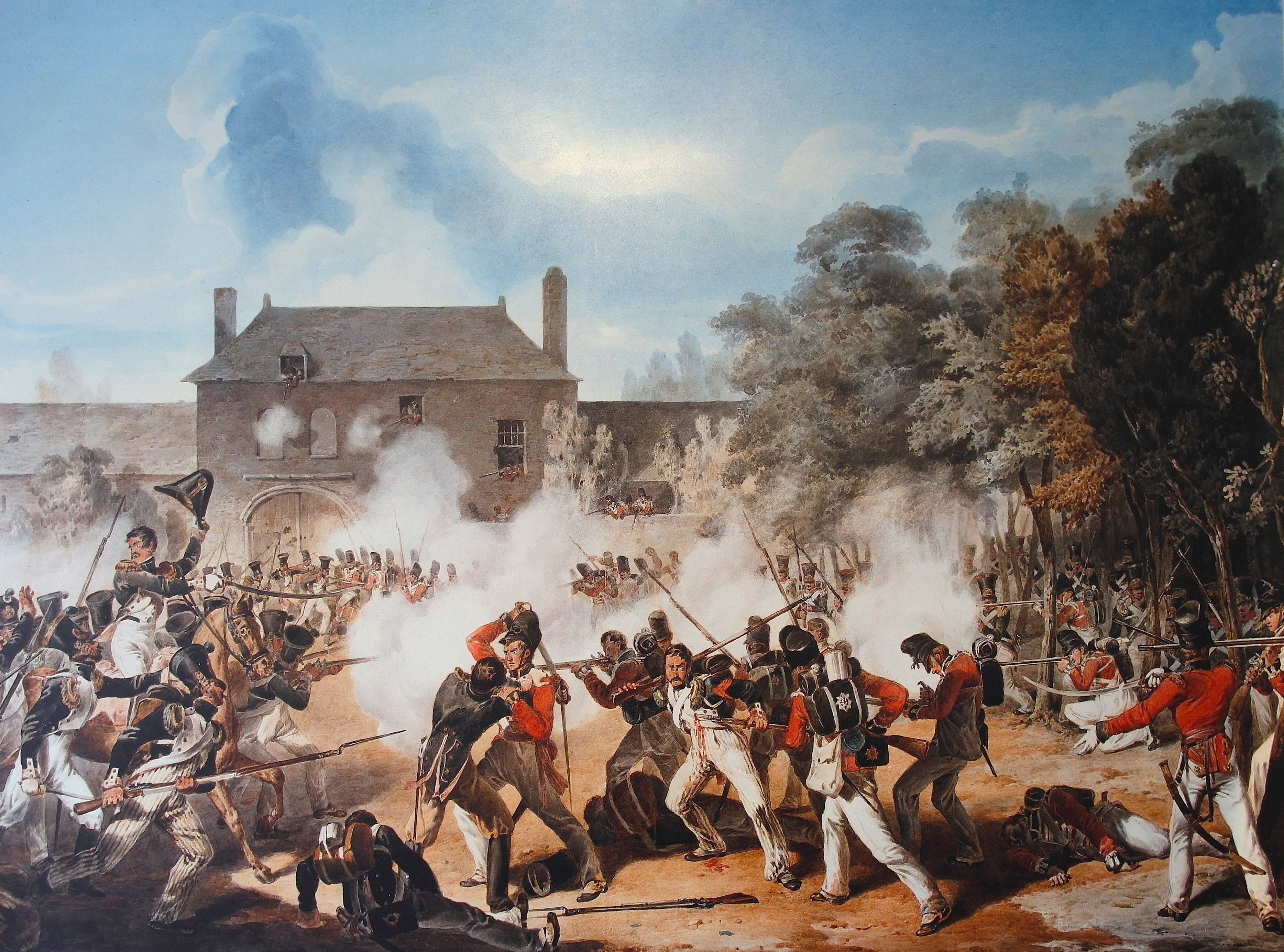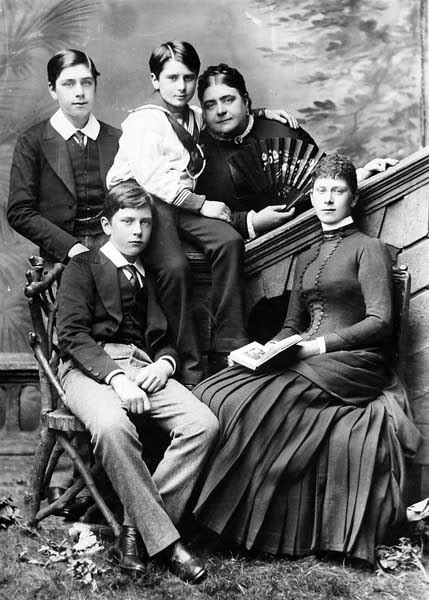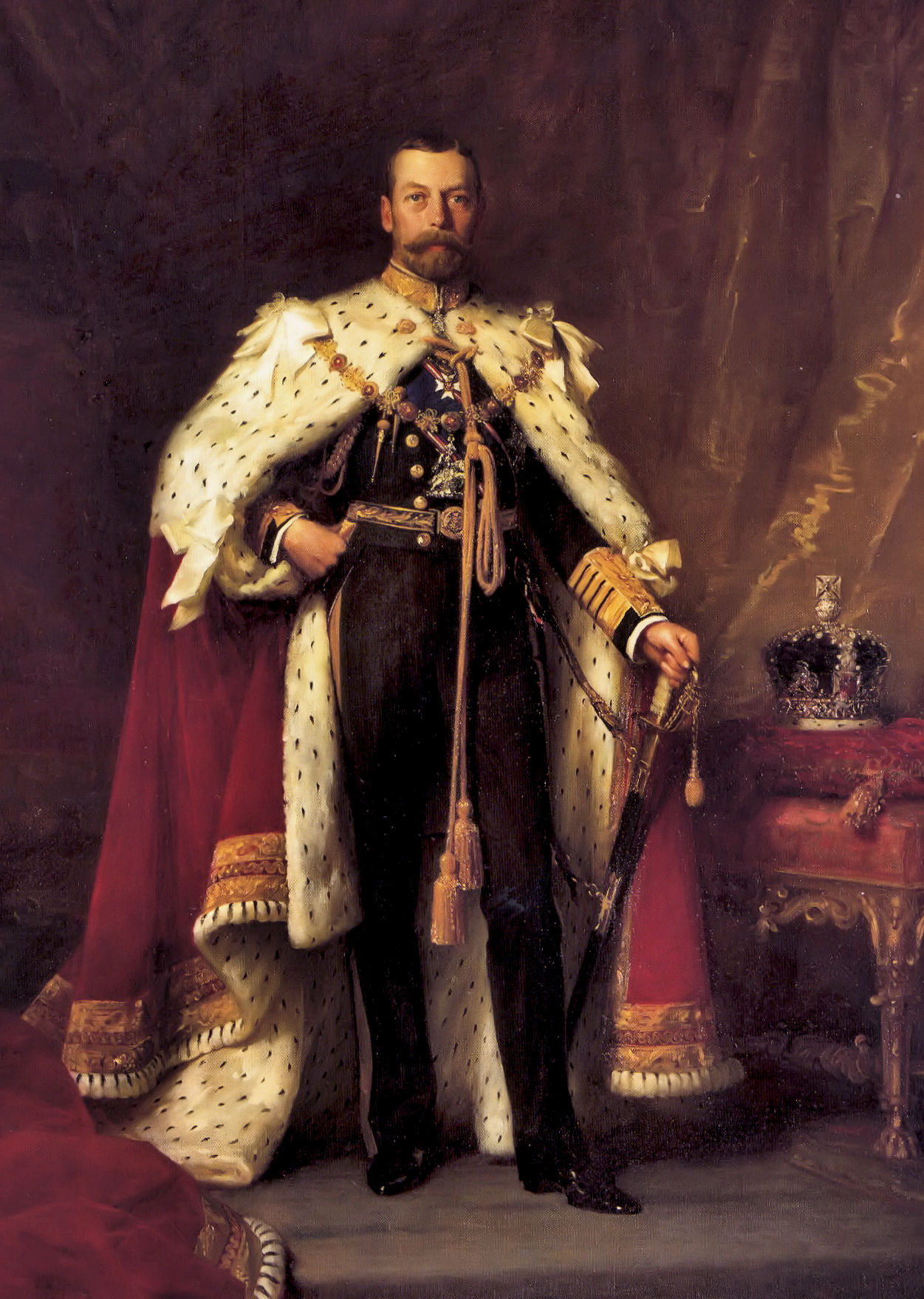|
Lord Frederick Cambridge
Lord Frederick Cambridge (Frederick Charles Edward, born Prince Frederick of Teck; 24 September 1907 – 15 May 1940) was a relative of the British royal family. He was the younger son of Adolphus Cambridge, 1st Marquess of Cambridge, formerly the Duke of Teck, and a nephew of Queen Mary and King George V. Birth Frederick was born on 24 September 1907 in Vienna, Austria, where his father was the British military attaché. At the time of his birth, his father was styled Prince Adolphus, Duke of Teck, the eldest son of Francis, Duke of Teck and Princess Mary Adelaide of Cambridge (a granddaughter of King George III). His mother was the Duchess of Teck (née Lady Margaret Evelyn Grosvenor), daughter of 3rd Marquess of Westminster (later 1st Duke of Westminster). He was styled "His Serene Highness Prince Frederick of Teck" from his birth, and was educated at Ludgrove School. Name change during World War I During the First World War, anti-German feeling in the United Kingdom l ... [...More Info...] [...Related Items...] OR: [Wikipedia] [Google] [Baidu] |
Vienna
en, Viennese , iso_code = AT-9 , registration_plate = W , postal_code_type = Postal code , postal_code = , timezone = CET , utc_offset = +1 , timezone_DST = CEST , utc_offset_DST = +2 , blank_name = Vehicle registration , blank_info = W , blank1_name = GDP , blank1_info = € 96.5 billion (2020) , blank2_name = GDP per capita , blank2_info = € 50,400 (2020) , blank_name_sec1 = HDI (2019) , blank_info_sec1 = 0.947 · 1st of 9 , blank3_name = Seats in the Federal Council , blank3_info = , blank_name_sec2 = GeoTLD , blank_info_sec2 = .wien , website = , footnotes = , image_blank_emblem = Wien logo.svg , blank_emblem_size = Vienna ( ; german: Wien ; ba ... [...More Info...] [...Related Items...] OR: [Wikipedia] [Google] [Baidu] |
Ludgrove School
Ludgrove School is an English independent boys preparatory boarding school. Ludgrove was founded in 1892 at Ludgrove Hall in Middlesex by the Old Etonian sportsman Arthur Dunn. Dunn had been employed as a master at Elstree School, which sent boys mainly to Harrow, and intended to nurture a school that focused on preparing boys to enter Eton. His educational philosophy was atypical by the standards of the time: discipline was applied with a lighter touch, masters were neither discouraged from mixing with pupils outside the classroom, or from being on familiar terms with the headmaster. Growing quickly thanks to the circle of friends Dunn had gathered in the course of his football and cricket career, Ludgrove soon became associated with families from the British aristocracy and landed gentry. Successfully navigating the challenging economic circumstances of the 1930s, since 1937 it has been based at a site near Wokingham in Berkshire, having taken over the former buildings of Wixe ... [...More Info...] [...Related Items...] OR: [Wikipedia] [Google] [Baidu] |
Heverlee Commonwealth War Graves Commission Cemetery
Heverlee War Cemetery is a Commonwealth War Graves Commission (CWGC) burial ground for the dead of the Second World War located in Heverlee, Belgium. The Heverlee War Cemetery was established in 1946 and contains 977 Commonwealth burials of the Second World War, twenty-nine First World War burials relocated to the cemetery, and twelve non-Commonwealth graves (including 11 Polish and 1 American airmen). The cemetery is one of those designed by Commission architect Philip Hepworth. Notable graves * Victoria Cross recipients: ** Donald Garland (1918–1940) ** Thomas Gray (1914–1940) ** Leslie Manser (1922–1942) * Others: ** John Balmer, Group Captain, RAAF ** Lord Frederick Cambridge (1907–1940), Captain in the Coldstream Guards ** Gerald MacIntosh Johnston (1904–1944), Canadian stage and actor and later German POW ** Andrew McPherson (1918–1940), RAF officer who piloted the first English plane to go over enemy lines during the Second World War ** Alec Howie Alec Doug ... [...More Info...] [...Related Items...] OR: [Wikipedia] [Google] [Baidu] |
Coldstream Guards
The Coldstream Guards is the oldest continuously serving regular regiment in the British Army. As part of the Household Division, one of its principal roles is the protection of the monarchy; due to this, it often participates in state ceremonial occasions. The Regiment has consistently provided formations on deployments around the world and has fought in the majority of the major conflicts in which the British Army has been engaged. The Regiment has been in continuous service and has never been amalgamated. It was formed in 1650 as 'Monck's Regiment of Foot' and was then renamed 'The Lord General's Regiment of Foot Guards' after the restoration in 1660. With Monck's death in 1670 it was again renamed 'The Coldstream Regiment of Foot Guards' after the location in Scotland from which it marched to help restore the monarchy in 1660. Its name was again changed to 'The Coldstream Guards' in 1855 and this is still its present title. Today, the Regiment consists of: Regimental Headq ... [...More Info...] [...Related Items...] OR: [Wikipedia] [Google] [Baidu] |
Captain (British Army And Royal Marines)
Captain (Capt) is a junior officer rank of the British Army and Royal Marines and in both services it ranks above lieutenant and below major with a NATO ranking code of OF-2. The rank is equivalent to a lieutenant in the Royal Navy and to a flight lieutenant in the Royal Air Force. The rank of captain in the Royal Navy is considerably more senior (equivalent to the Army/RM rank of colonel) and the two ranks should not be confused. In the 21st-century British Army, captains are often appointed to be second-in-command (2IC) of a company or equivalent sized unit of up to 120 soldiers. History A rank of second captain existed in the Ordnance at the time of the Battle of Waterloo. From 1 April 1918 to 31 July 1919, the Royal Air Force maintained the junior officer rank of captain. RAF captains had a rank insignia based on the two bands of a naval lieutenant with the addition of an eagle and crown above the bands. It was superseded by the rank of flight lieutenant on the fol ... [...More Info...] [...Related Items...] OR: [Wikipedia] [Google] [Baidu] |
Heverlee War Cemetery - Cambridge1
Heverlee () is a town in Belgium. It is a borough of the city of Leuven. Heverlee is bordered by Herent, Bertem, Oud Heverlee and several other municipalities that are part of Leuven (including Leuven proper and Kessel-Lo). The town is the location of the Heverlee War Cemetery for Commonwealth casualties from the Second World War. Education The town also harbours a significant part of the university campus of the Katholieke Universiteit Leuven. The Arenberg campus is the main area for research and educational facilities for exact sciences (The Science, Engineering and Technology Group). These contain the Faculty of Engineering (see Arenberg Château), the Faculty of Bioscience Engineering and the Faculty of Science. A part of the Biomedical Group, namely the Faculty of Kinesiology and Rehabilitation Sciences also has its main facilities on the campus. The is another higher education facility with some facilities in Heverlee. It lies next to the Heilig Hart-Instituut, which is a ... [...More Info...] [...Related Items...] OR: [Wikipedia] [Google] [Baidu] |
George Cambridge, 2nd Marquess Of Cambridge
George Francis Hugh Cambridge, 2nd Marquess of Cambridge, (11 October 1895 – 16 April 1981), known as Prince George of Teck until 1917 and as Earl of Eltham from 1917 to 1927, was a relative of the British royal family, a great-great-grandson of King George III and nephew of Queen Mary and King George V. He was also nephew to the 1st Earl of Athlone. He was the elder son of the 1st Marquess of Cambridge, formerly the Duke of Teck, and his wife, the former Lady Margaret Grosvenor. Early life Born at Grosvenor House, the home of his maternal grandfather, the 1st Duke of Westminster, he was styled His Serene Highness Prince George of Teck from birth. On his father's side, he was descended from King George III and—morganatically—from the Royal House of Württemberg. In June 1917, at the request of George V, his father relinquished the titles, styles, and designations, "Highness", "Duke of Teck" and "of Teck" in the Kingdom of Württemberg and the German Empire, and a ... [...More Info...] [...Related Items...] OR: [Wikipedia] [Google] [Baidu] |
Peerage Of The United Kingdom
The Peerage of the United Kingdom is one of the five Peerages in the United Kingdom. It comprises most peerages created in the United Kingdom of Great Britain and Ireland after the Acts of Union 1800, Acts of Union in 1801, when it replaced the Peerage of Great Britain. New peers continued to be created in the Peerage of Ireland until 1898 (the last creation was the Viscount Scarsdale, Barony of Curzon of Kedleston). The House of Lords Act 1999 reformed the House of Lords. Until then, all peers of the United Kingdom were automatically members of the House of Lords. However, from that date, most of the hereditary peers ceased to be members, whereas the life peers retained their seats. All hereditary peers of the first creation (i.e. those for whom a peerage was originally created, as opposed to those who inherited a peerage), and all surviving hereditary peers who had served as Leader of the House of Lords, were offered a life peerage to allow them to continue to sit in the House ... [...More Info...] [...Related Items...] OR: [Wikipedia] [Google] [Baidu] |
Marquess Of Cambridge
Marquess of Cambridge was a title that was created twice, once in the Peerage of England and once in the Peerage of the United Kingdom. The first creation was for Prince George Augustus in 1706, when he was created Duke of Cambridge, Marquess of Cambridge, Earl of Milford Haven, Viscount Northallerton and Baron of Tewkesbury. He succeeded to the Dukedoms of Cornwall and Rothesay on his father's accession to the throne on 1 August 1714. His titles merged with the Crown when he succeeded to the throne as King George II in 1727. The second creation (along with the subsidiary titles Earl of Eltham and Viscount Northallerton) was in 1917 for Adolphus, Duke of Teck, brother of Queen Mary and brother-in-law of King George V, when he gave up his German titles and took the surname "Cambridge". Adolphus Cambridge was a grandson of Prince Adolphus, Duke of Cambridge through his daughter Princess Mary Adelaide of Cambridge. Upon the death of the second Marquess without any male heirs, the ... [...More Info...] [...Related Items...] OR: [Wikipedia] [Google] [Baidu] |
Prince Alexander Of Teck
Major General Alexander Cambridge, 1st Earl of Athlone (Alexander Augustus Frederick William Alfred George; born Prince Alexander of Teck; 14 April 1874 – 16 January 1957), was a British Army commander and major-general who served as Governor-General of the Union of South Africa and as Governor General of Canada. Prince Alexander was born in London to the Duke and Duchess of Teck and was educated at Eton College and the Royal Military College, Sandhurst. In 1904, he married Princess Alice of Albany and rose in the military ranks through his service on the western front of the First World War, receiving numerous honours and decorations. A cousin and also brother-in-law of King George V, he relinquished his German titles in 1917, including that of Prince of Teck in the Kingdom of Württemberg, and was elevated to the peerage as the Earl of Athlone. He was in 1923 appointed as South Africa's governor-general by the King, on the recommendation of Prime Minister of the United ... [...More Info...] [...Related Items...] OR: [Wikipedia] [Google] [Baidu] |
House Of Windsor
The House of Windsor is the reigning royal house of the United Kingdom and the other Commonwealth realms. In 1901, a line of the House of Saxe-Coburg and Gotha (itself a cadet branch of the House of Wettin) succeeded the House of Hanover to the British monarchy with the accession of King Edward VII, son of Queen Victoria and Prince Albert of Saxe-Coburg and Gotha. In 1917, the name of the British royal house was changed from the German ''Saxe-Coburg and Gotha'' to the English ''Windsor'' because of anti-German sentiment in the United Kingdom during the First World War. There have been five British monarchs of the House of Windsor since then: George V, Edward VIII, George VI, Elizabeth II, and Charles III. The children and male-line descendants of Queen Elizabeth II and Prince Philip also genealogically belong to the House of Oldenburg since Philip belonged to the Glücksburg branch of that house. The monarch is head of state of fifteen sovereign states. These are the United ... [...More Info...] [...Related Items...] OR: [Wikipedia] [Google] [Baidu] |
House Of Saxe-Coburg-Gotha
The House of Saxe-Coburg and Gotha (; german: Haus Sachsen-Coburg und Gotha) is a European royal house. It takes its name from its oldest domain, the Ernestine duchy of Saxe-Coburg and Gotha, its members later sat on the thrones of Belgium, Bulgaria, Mexico, Portugal, and the United Kingdom and its dominions. Founded in 1826 by Ernest Anton, the sixth duke of Saxe-Coburg-Saalfeld, it is a cadet branch of the Saxon House of Wettin. One agnatic branch currently reigns in Belgiumthe descendants of Leopold Iand another reigned until the death of Elizabeth II in the United Kingdomthe descendants of Albert, Prince Consort. In 1917, the First World War caused the British king George V to officially change the name from "''Saxe-Coburg and Gotha''" to "''Windsor''" in the United Kingdom. In Belgium, due to similar resentment against Germany after the Great War, the use of name was also changed in 1920 by King Albert I to "''de Belgique''" ( French), "''van België''" (Dutch) o ... [...More Info...] [...Related Items...] OR: [Wikipedia] [Google] [Baidu] |





